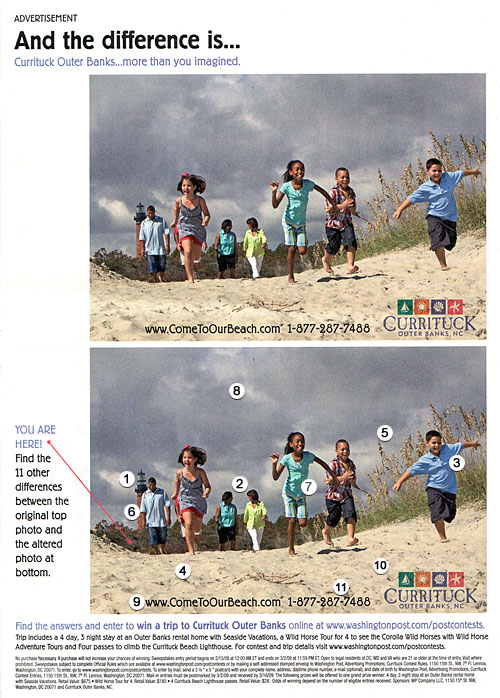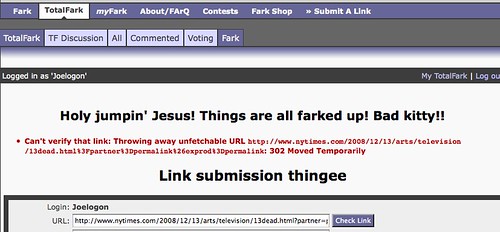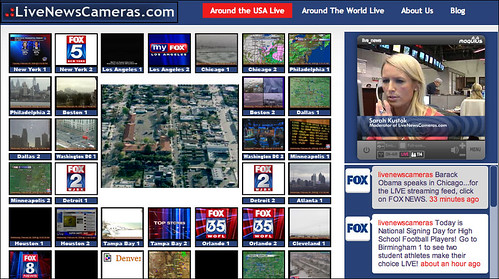As previously threatened, I'm at the
Future of News Industry Jobs Conference, at the University of Maryland. Getting to College Park was less of a hassle than I feared, so I got there just on time.
Now, I have no journalism experience, but I'm interested in online media in general and social media in particular.
There are a lot of newspaper folks here; some of them are visibly uncomfortable with the whole online thing. (This is not unfamiliar to me -- I was working with a lot of product folks who were uncomfortable with the whole social media/public communciation thing). There's a lot of anxiety evident, especially among the union folks.
The first session really demonstrated this anxiety -- "Industry Upheavals and the Effects on News Workers," where
John Newhagen of the
Phillip Merrill College of Journalism presented a survey of newspaper industry people (reporters, ad folks, circulation, etc) and their attitudes towards the future of the industry.
* 73% respondents were not sure or did not think they will be working for a newspaper in 5 years. It evidenced a nostalgic view of the past, pessimism towards the future.
* A slide on attitudes about the importance of software tools (Google, spellcheck, Photoshop, Video [Avid]) and hardware tools (PC, Cell, Digital Cameras, Digital Video)
* A high percentage of people responding to questions about layoffs of people doing the same jobs as them.
Panel reactions varied.
Linda Foley of the
Newspaper Guild/Communications Workers of America was mostly defensive spin (e.g. high proportion of responders with low work-related Web usage [c. 1 hr/
week day -- Correction: I was quoting someone else, who was incorrect; I later spoke to John Newhagen and saw the survey slides] meant that reporters were out in the community, not deskbound
Tom Rosenstiel of the
Project for Excellence in Journalism gave a contrarian view, where the question isn't (or shouldn't be) "will you still be in your job at the newspaper" but "will you still be doing journalism" (in whatever form)
Liza Gross of the Miami Herald and Int'l Women's Media Foundation had the best points and anecdotes. She noted that the fears & anxieties of int'l newsroom workers were similar to those presented in the survey and that layoff/outsourcing fears were greater in older (35+) workers.
* Sound bite: "Generally speaking, we journalists are not models of time management." She gave an example of designer using a "
proportion wheel" (I had to look it up -- it's basically a slide-rule for resizing images -- talk about not adapting to "new" technology)
* Some journalists simply fear losing status or voice, especially where "voice" is equated with "length"-- the sheer number of words printed (vs. integrating graphics, photos, video); the same types of folks exhibit discomfort with interactivity, citizen/public journalism -- problem of mindset and the way journalists see themselves.
* Looking at changes in newsroom piecemeal leads to lack of clarity
* Rush to hyperlocal news (local-local-local) -- won't solve all ills, may not work for everyone
* Newspeople can get lost in academic issues (she shared a story of a days-long discussion at a European paper whether editors should use the computer mouse, or if that was a role for a blue-collar worker -- I'm hoping it was an old ancecdote)
Bruce Shapiro from the
Dart Center for Journalism & Trauma had a few points, but they were basically irrelevant to the session.
From the QA, a few points to pull out:
* The role of technical training -- people want it, say they don't get it, then often don't take it when it's offered.
* A Reuters writer told of being asked to do video, audio, photo (typically other union roles), and brought up the question of quality and time.
* The session videographer closed it out by saying: Let the kids teach. It kind of raises an interesting question -- if there's the idea of mentorship and apprenticeship by more-experienced journalists, why not have mentorship and apprenticeship by folks who are experienced with the new technologies and tools?
Labels: conferences, journalism, social media




